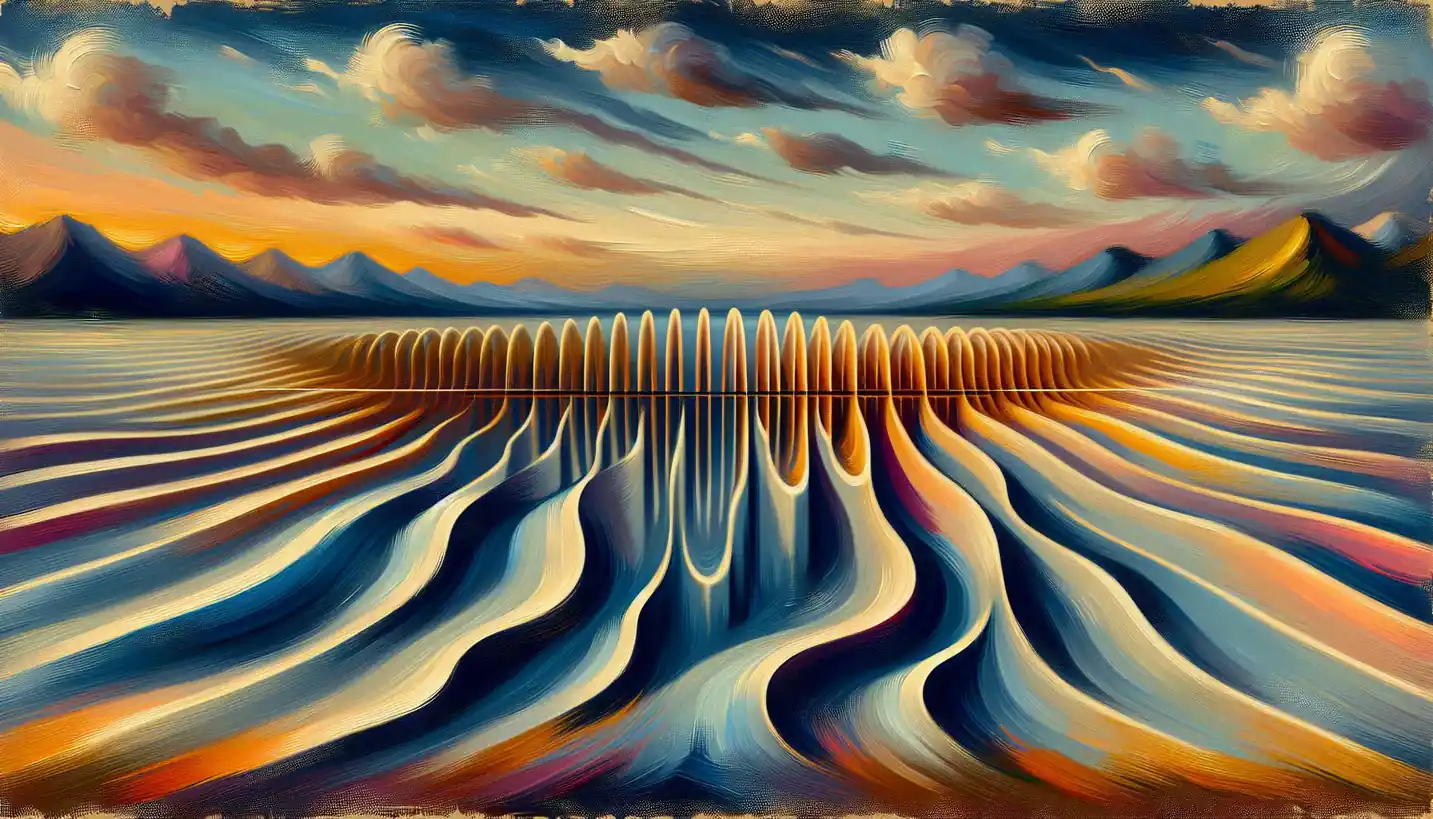· Physics · 4 min read
Exploring Bosons and Fermions: Building Blocks of the Quantum World
Bosons and fermions form the backbone of our quantum world, with distinct characteristics defining their roles. Explore how they build the universe's structure.

In the realm of physics, bosons and fermions are like the fundamental characters in the grand story of the universe. To understand these intriguing particles, let’s dive into what they are and why they matter in the science of quantum field theory.
The Basics of Quantum Field Theory
Quantum field theory, often referred to as QFT, is a framework that blends quantum mechanics with Einstein’s theory of relativity. It’s like a language that accurately describes how the tiny bits of the universe—particles—interact with each other. Imagine if you could see the universe as a vast ocean of fields, where particles are merely excitations or ripples in these fields.
Meet the Bosons
Bosons are named after the Indian physicist Satyendra Nath Bose, and they include particles like photons, gluons, and the famous Higgs boson. Bosons obey something called Bose-Einstein statistics. Picture them as the social butterflies of the particle world. They don’t mind sharing the same space or state. This unique behavior allows bosons to play crucial roles in carrying forces.
The Role of Bosons
Consider light; it’s made up of photons, which are bosons. When you turn on a lamp, you’re essentially sending out millions of these photons. They have no problem overlapping with each other to illuminate your room. Bosons are the carriers of fundamental forces. For example:
- Photons carry the electromagnetic force.
- W and Z bosons are responsible for the weak nuclear force.
- Gluons hold protons and neutrons together in atomic nuclei through the strong force.
The Higgs Boson
The Higgs boson is a superstar in the world of physics, sometimes dubbed the “God particle.” Its discovery at CERN in 2012 was a massive breakthrough. The Higgs field, of which the Higgs boson is a part, gives mass to particles. Imagine running through a swimming pool and feeling the resistance; that’s akin to how particles acquire mass by interacting with the Higgs field.
Enter the Fermions
Fermions are named after the Italian physicist Enrico Fermi. They include particles like electrons, neutrinos, and quarks. Unlike their boson cousins, fermions are the independent spirits. They obey the Pauli Exclusion Principle, which states that no two fermions can occupy the same quantum state simultaneously.
Building Matter with Fermions
Fermions make up all the “stuff” in the universe. Everything you see around you, including your own body, is made up of fermions. Here’s how they come together:
- Quarks combine to form protons and neutrons, which, along with electrons, make up atoms.
- Leptons are another group of fermions, with electrons being the most well-known member.
Because fermions cannot share the same state, they neatly stack up to create the structure of matter. This is why solid objects don’t pass through each other. Imagine fermions as tiny, stubborn building blocks that refuse to settle for the same space, helping create the diversity of matter we see.
Quantum Spin and Statistics
The distinction between bosons and fermions comes down to a property known as spin. Bosons have integer spins (0, 1, 2, etc.), while fermions have half-integer spins (1/2, 3/2, etc.). Spin is a bit like the particle’s identity card, determining their statistical behavior.
The Dance of Particles: An Interaction
Bosons and fermions constantly interact in the quantum dance, creating the universe as we know it. For instance, when an electron (a fermion) absorbs a photon (a boson), it jumps to a higher energy level. These interactions are the essence of how chemical reactions occur, how light is emitted, and even how we breathe air.
Why This Matters
Understanding these tiny participants in the grand cosmic play helps us unlock the mysteries of the universe. The field of quantum physics, which studies these particles, is the foundation for groundbreaking technologies like semiconductors and quantum computing.
The Future of Quantum Exploration
Quantum field theory is still evolving. Researchers are curious about the behaviors of particles at even smaller scales, exploring realms accessible with enormous particle colliders. One open-ended question is whether there are undiscovered particles beyond the bosons and fermions we know today. What new forces or phenomena could they reveal?
Unraveling the Mysteries
Though it might seem complex, the study of bosons and fermions provides a crucial window into understanding how everything from a quark to a galaxy is connected. Their story is a reminder of the universe’s rich tapestry, woven together by the interplay of light, matter, and energy.
In the dance of the universe, bosons and fermions lead, guiding scientists on a captivating journey to the heart of existence. The secrets they hold inspire curiosity, inviting us all to ponder what lies beyond the visible horizon of knowledge.



